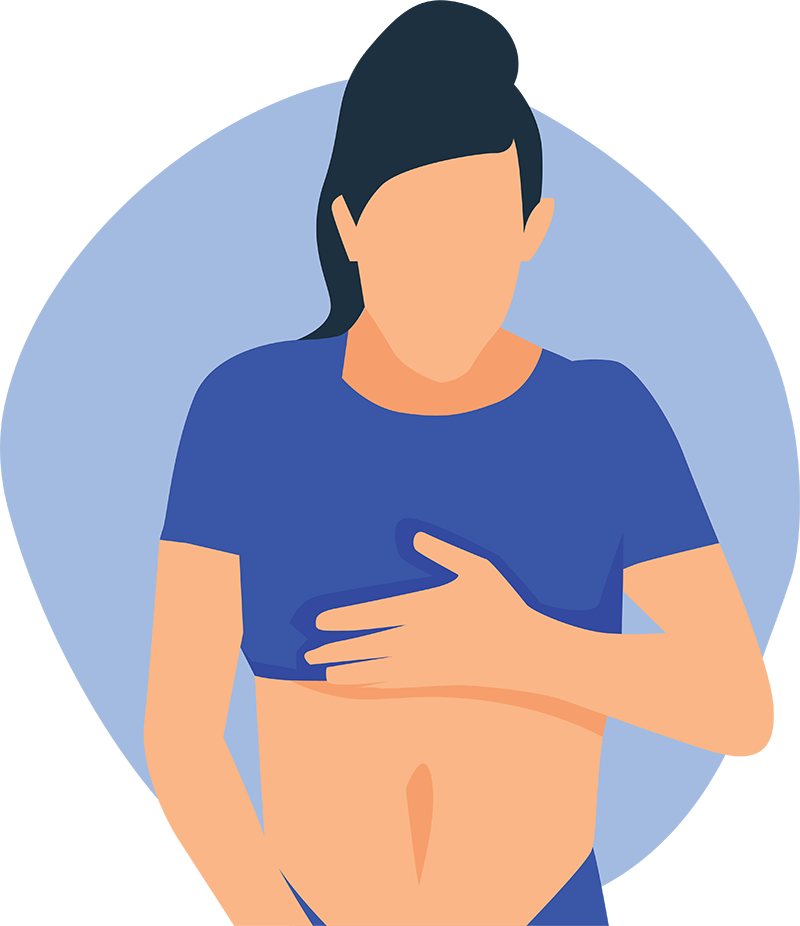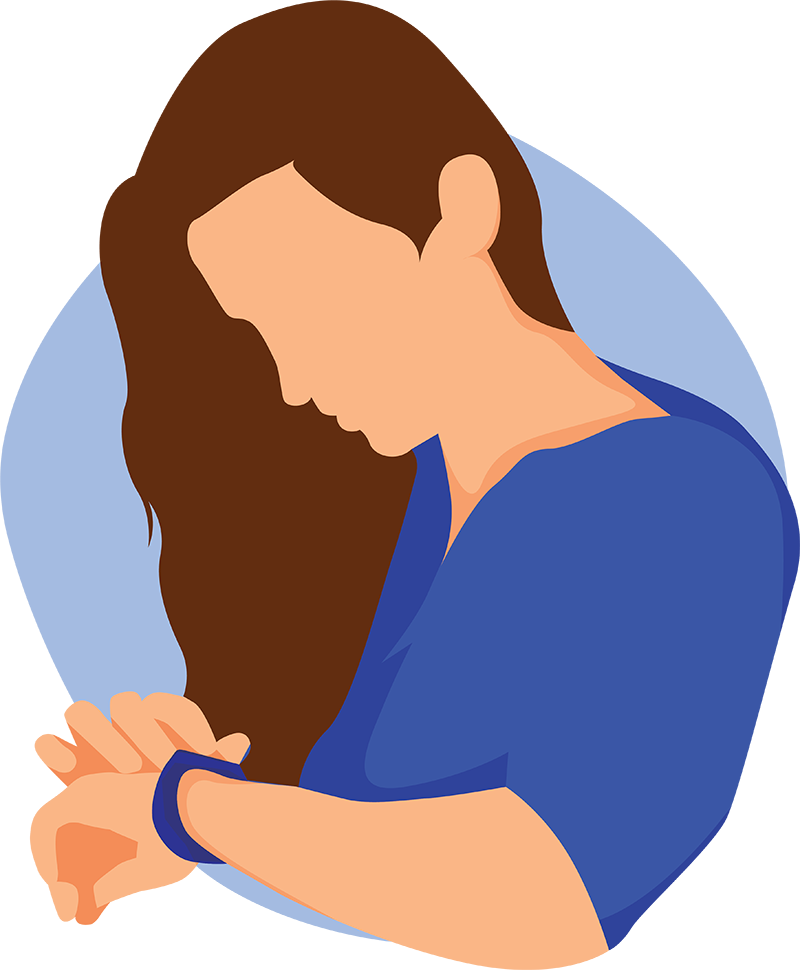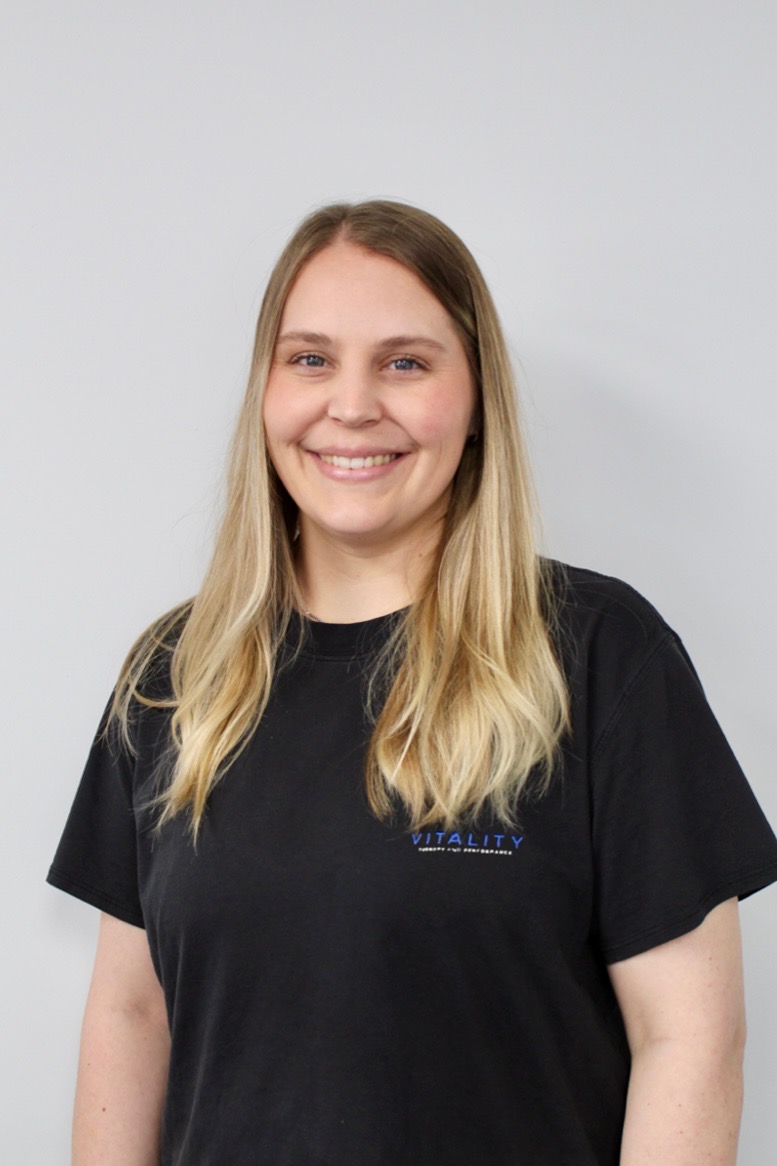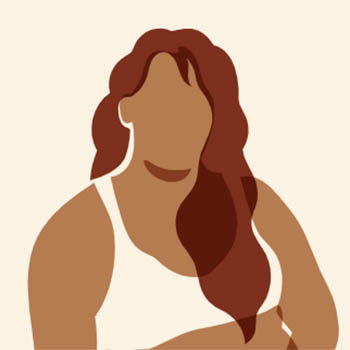Diastasis Recti
Pelvic floor physical therapy isn’t just all about the pelvic floor. You may be feeling core weakness or noticing a bulging in the center of your abdomen postpartum. We can help address weakness in the abdominals to get you back to what you want to do, and avoid future complications from abdominal separation such as back pain or incontinence.

Can We Help?
What Causes DRA
DRA is caused by stretching of the connective tissue between the rectus abdominis muscles. Rapid weight gain (such as in pregnancy) or over training of the upper abdominals can cause DRA.

How does PT help DRA?
At Vitality Pelvic Health you’ll work 1:1 with your physical therapist to develop a plan of care to strengthen your deep abdominals and fix your DRA without surgery. Your treatment plan may include exercises for strengthening, strategies to avoid tension on the connective tissue, and co-strengthening with the surrounding musculature.
How long will it take?
A typical plan of care for DRA is around 6-8 weeks. Closing the gap can take time, and a lot of consistency.

What the research says:
To improve quality of life, rehabilitation should be focused on restoration of function, not just on “closing the gap”

of women have DRA 12 months postpartum that will likely not resolve on its own
Common complaints
Frequently Asked Questions
Which exercises are safe with diastasis recti?
Exercise safety is dependent on severity of separation and baseline strength. The two main exercises to be cautious with are crunches and planks. Both of these exercises place increased stress on the already compromised abdominal wall. Working with a physical therapist will help determine if either of these exercises are safe for you to do, or what to work on in order to get there safely.
What does diastasis recti look like?
Diastasis recti can look like abdominal bulging, increased abdominal bloating, or just feeling weak in your core months/years postpartum.
What is considered “normal”?
An abdominal separation of 2 fingers or less is considered “normal”.
Can Diastasis recti be prevented?
100% of pregnant women will experience diastasis with pregnancy, but not all of them will experience resolution of their separation postpartum without intervention.
Get To Know Our Pelvic Health Team...

Tristen Swengle

Nikki Randolph

Kally Owen
Testimonials
What Clients Are Saying

I have been coming to Vitality Pelvic Health for several weeks. I was looking for options to help strengthen my pelvic floor following an injury during childbirth and just aging in general. I am 44 years old, and my youngest child is 13, but Tristan explained that we are always in that postpartum phase. Tristan is extremely knowledgeable and so incredibly thorough! I’ve never met anyone who knows so much about pelvic dysfunction and ways to combat it. She’s created a strengthening program for me that I can continue to use long after my sessions are completed. I highly recommend her to any woman seeking help in this area. You will not regret it!

Dr. Nikki is truly amazing. I came to her a year and half after having my baby because I felt like something was off and that I was still not fully recovered. She gave me a whole toolbox of movements and practices to get myself back together and feel confident that my body could safely pick up my growing daughter. She figured out exactly what I needed to do, and gave me a realistic plan all while being so kind and patient. I could not recommend her more to any new moms or moms to be (or really anyone struggling with functional movement).


